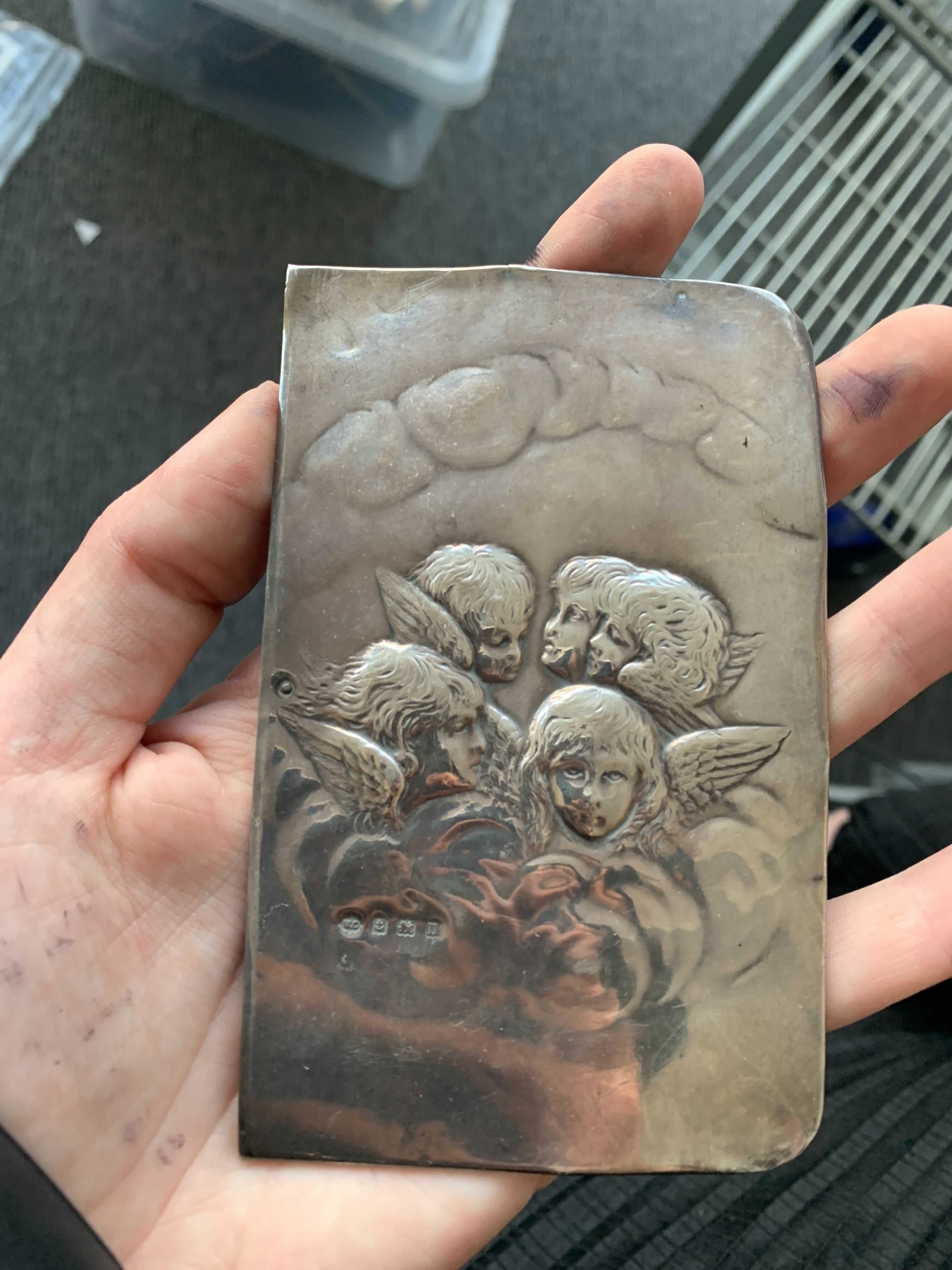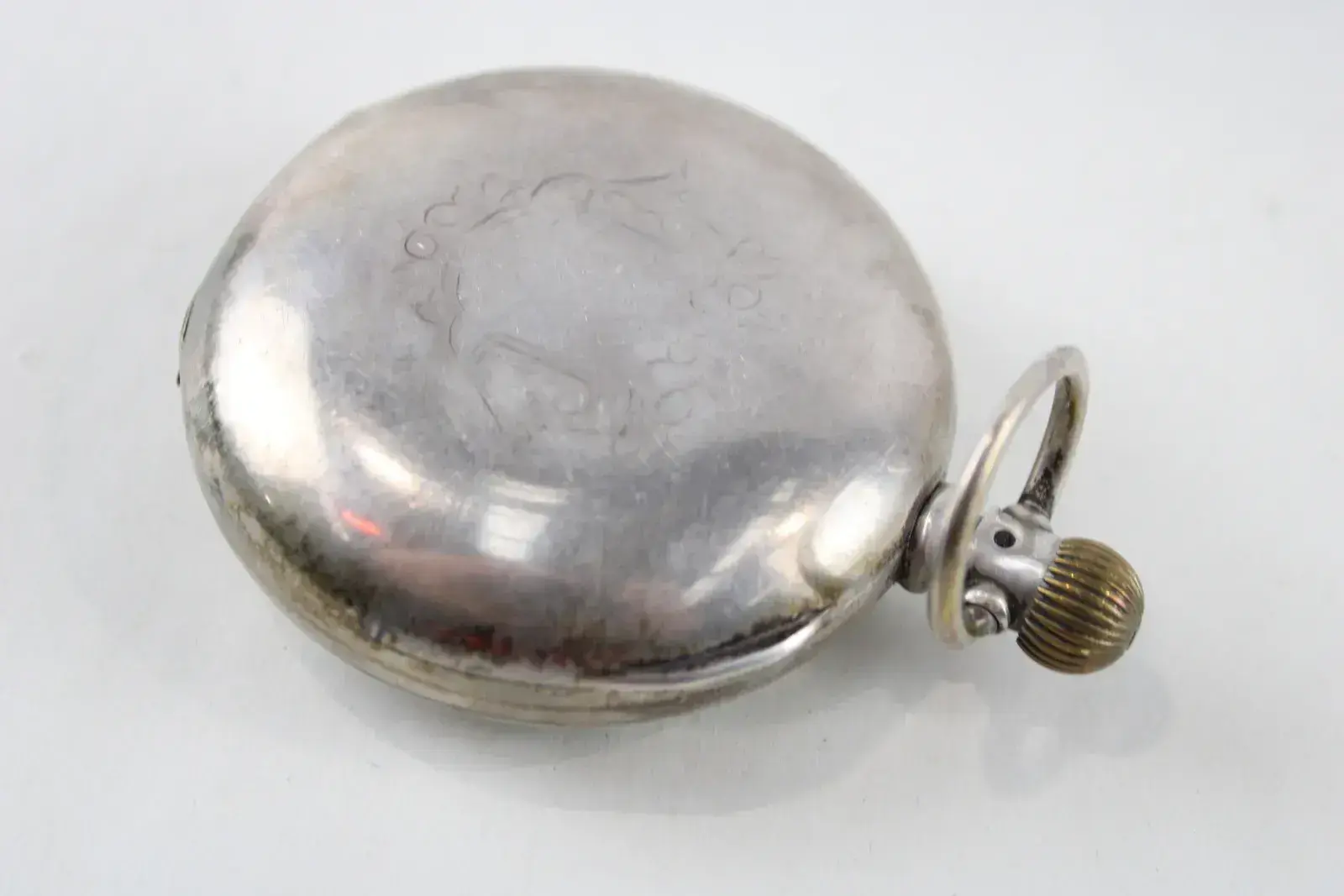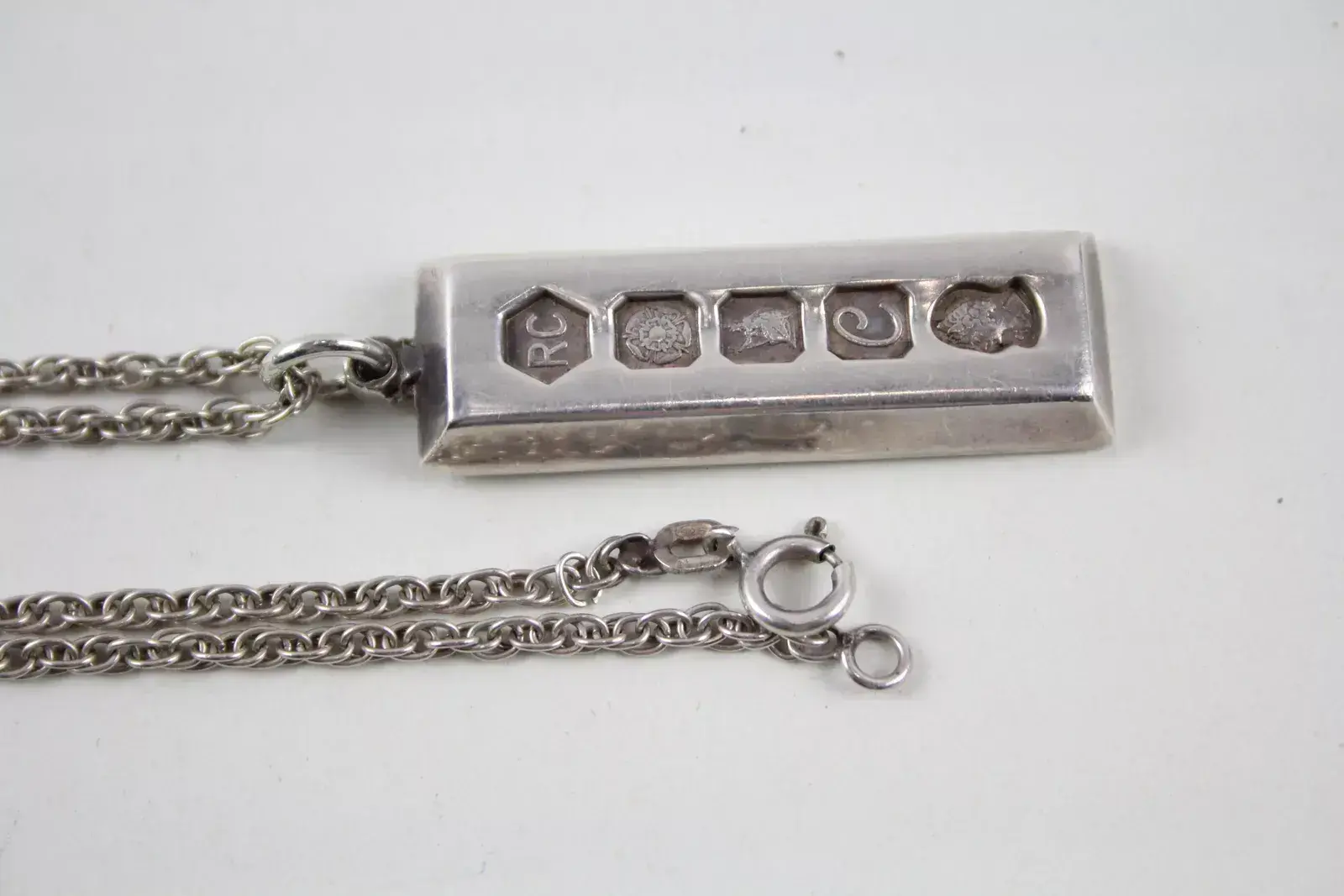- Types of Silver
- Sterling Silver:
- How to Identify Sterling Silver Items
- Definition and Characteristics
- Hallmarks and Stamps
- Magnet Test
- Tarnish
- Coin Silver:
- Identifying Coin Silver Items
- Purity Testing
- Historical Context
- Physical Characteristics
- Britannia Silver:
- Identifying Britannia Silver Items
- Testing Silver - Tried and Tested Methods
- What Vintage Cash Cow Buys
- Conclusion
From ancient civilisations to contemporary artisans, silver has always been cherished for its elegance and versatility. It's not just a metal; it's a storyteller, a symbol of wealth and status, and a medium for artistic expression.
In this guide, we'll dive into the many sides of silver. We'll explore its historical use as currency and its modern applications in jewellery and more. Plus, we'll shine a light on the silver treasures you might have at home, ready to turn into cash!
Types of Silver
Sterling Silver:
Sterling silver, a beloved classic in the world of metalwork, is renowned for its purity and durability. It is composed of 92.5% silver and 7.5% alloy (usually copper) and boasts a gleaming appearance and robust structure.
Commonly recognised by its hallmark, sterling silver signifies quality and authenticity. And throughout history, this versatile metal has been crafted into a plethora of items, from elegant tableware to intricate jewellery pieces.
Its durability and malleability make it a favourite among artisans, ensuring that sterling silver remains a timeless choice for both practical and ornamental purposes.
Chances are you might have some of these sterling silver items in your home:
Jewellery: Rings, necklaces, bracelets, earrings, and brooches.
Tableware: Cutlery sets, serving trays, tea sets, and candlesticks.
Home Décor: Picture frames, vases, decorative boxes, and napkin rings.
Personal Accessories: Belt buckles, keychains, and pocket mirrors.
Collectables: Figurines, ornaments, and souvenir spoons.
Antique Items: Silverware, goblets, and inkwells.
Musical Instruments: Flutes, saxophones, and some parts of guitars and violins.

How to Identify Sterling Silver Items
Sterling silver, renowned for its purity, is a coveted material in the world of jewellery and silverware. Here's how to discern genuine sterling silver from other silver-like materials.
Definition and Characteristics
Sterling silver consists of 92.5% pure silver and 7.5% alloy, typically copper. This composition lends it both strength and shine, making it a popular choice for high-quality items.
Hallmarks and Stamps
Look for specific hallmarks or stamps denoting sterling silver. Common marks include "925" or "Sterling," indicating the purity of the metal.
Magnet Test
Sterling silver is non-magnetic, so if a magnet is attracted to the item, it's likely not sterling silver.
Tarnish
While sterling silver can tarnish, it does so more slowly and evenly than silver-plated items. Authentic sterling silver will develop a soft patina over time.
By familiarising yourself with these characteristics and tests, you can confidently identify genuine sterling silver items and sell them for cash!
Coin Silver:
Coin silver, historically significant in the United States, refers to a type of silver alloy commonly used in early American coinage and domestic items. It earned its name because it was often made from melted down coins.
In the early days of the United States, before standardised silver purity regulations were established, coins were commonly used as a source of silver for crafting household items. As a result, the silver content varied, typically ranging from around 80% to 90%.
Coin silver possesses a slightly lower silver content compared to sterling silver, typically ranging from 80% to 90%, with the remainder being composed of other metals, such as copper. This lower purity results in a slightly softer and more malleable material than sterling silver.
Common uses of coin silver historically included the crafting of tableware, such as spoons, forks, and teapots, as well as decorative items like candlesticks and trays. Due to its historical significance and unique composition, coin silver items often hold value for collectors and enthusiasts of Americana and early American craftsmanship.

Identifying Coin Silver Items
Identifying coin silver items requires attention to detail and an understanding of their unique characteristics. Here's how to distinguish these historically significant pieces:
Hallmarks and Stamps
Look for specific hallmarks or stamps on the item indicating coin silver. While coin silver items may not always be stamped with purity marks like sterling silver, they may bear other identifiers, such as maker's marks or regional symbols.
Purity Testing
If no hallmarks are present, consider conducting a purity test to determine the silver content. Professional testing kits or services can help assess the composition of the metal accurately.
Historical Context
Consider the historical context of the item. Coin silver was commonly used in early American craftsmanship before standardised silver purity regulations were established. Items crafted during this period may be more likely to be made of coin silver.
Physical Characteristics
Examine the physical characteristics of the item. Coin silver items may exhibit a slightly lower silver content than sterling silver, resulting in a softer and more malleable material. They may also display signs of wear consistent with their age and historical use.
By paying attention to these key indicators, you can confidently identify coin silver items that you might have at home.
Britannia Silver:
Britannia silver, a hallmark of British craftsmanship, boasts a long and storied history dating back to the 17th century. Named after the Latin name for Britain, this silver alloy is renowned for its higher purity compared to sterling silver.
The hallmark for Britannia silver typically features the figure of Britannia, the iconic symbol of Britain, along with a numeric stamp denoting its purity, which is usually 95.8%. This higher silver content sets Britannia silver apart from sterling silver, which typically contains 92.5% silver.
In contrast to sterling silver, Britannia silver offers a higher level of purity, making it a preferred choice for those seeking exceptional quality and craftsmanship. The increased silver content results in a brighter, whiter appearance and a softer, more malleable material, ideal for intricate designs and fine detailing.
While both sterling silver and Britannia silver are prized for their beauty and versatility, Britannia silver's higher purity and distinctive hallmark make it a standout choice for discerning collectors and connoisseurs of fine silverware and jewellery.

Identifying Britannia Silver Items
Identifying Britannia silver items requires a keen eye for detail and an understanding of its distinctive characteristics. Here's how to recognise these prestigious pieces:
Hallmarks and Stamps
Look for the hallmark specific to Britannia Silver. This hallmark typically features the figure of Britannia, along with a numeric stamp indicating its purity, usually 95.8%. Britannia silver items may also bear additional hallmarks or maker's marks for further authentication.
Purity Testing
If unsure of the hallmark or authenticity, consider conducting a purity test to verify the silver content. Professional testing kits or services can provide accurate assessments of the metal's composition.
Physical Characteristics
Examine the physical attributes of the item. Britannia silver's higher purity results in a brighter, whiter appearance compared to sterling silver. It may also exhibit a softer, more malleable texture, ideal for intricate designs and fine craftsmanship.
Historical Context
Consider the historical context of the item. Britannia silver has been used in British craftsmanship for centuries, particularly in the creation of fine silverware and jewellery. Items crafted during specific periods may be more likely to be made of Britannia silver.
By getting to know these important signs, you'll become skilled at spotting Britannia silver items and potentially sell them for cash!
Testing Silver - Tried and Tested Methods
Checking to see if the items you have at home are genuine silver is crucial for unlocking their cash value potential. Fortunately, there are several methods to verify the authenticity of the metal across different items. Here's a brief overview.
Acid tests: You can try a small acid test on the silver. Real silver won't react much, but fake silver might change colour or corrode.
Magnet test: Silver isn't magnetic, so if a magnet sticks to it, it's probably not real silver.
Silver testing kit: These kits come with different tools and solutions to check how pure the silver is. They often include acid solutions and testing stones to see how hard the metal is.
What Vintage Cash Cow Buys
Here at Vintage Cash Cow, we’re interested in a diverse range of silver items that may hold unexpected value. From inherited silver jewellery to classic silver cutlery, we're keen to discover the treasures you have. Additionally, we accept silver plate, silverware, and silver coins, including foreign silver. Don't overlook silver-plated items like clocks and other decorative pieces—they could be more valuable than you realise!
Conclusion
Now, it's your turn to dive into your collections or hunt down some silver treasures to sell for cash. You never know what surprises you might find!
Remember, silver items are not just valuable—they're also timeless and beautiful pieces worth celebrating. Whether you're rummaging through your attic or exploring charity shops there’s no better time to start unlocking the treasures of the past!
